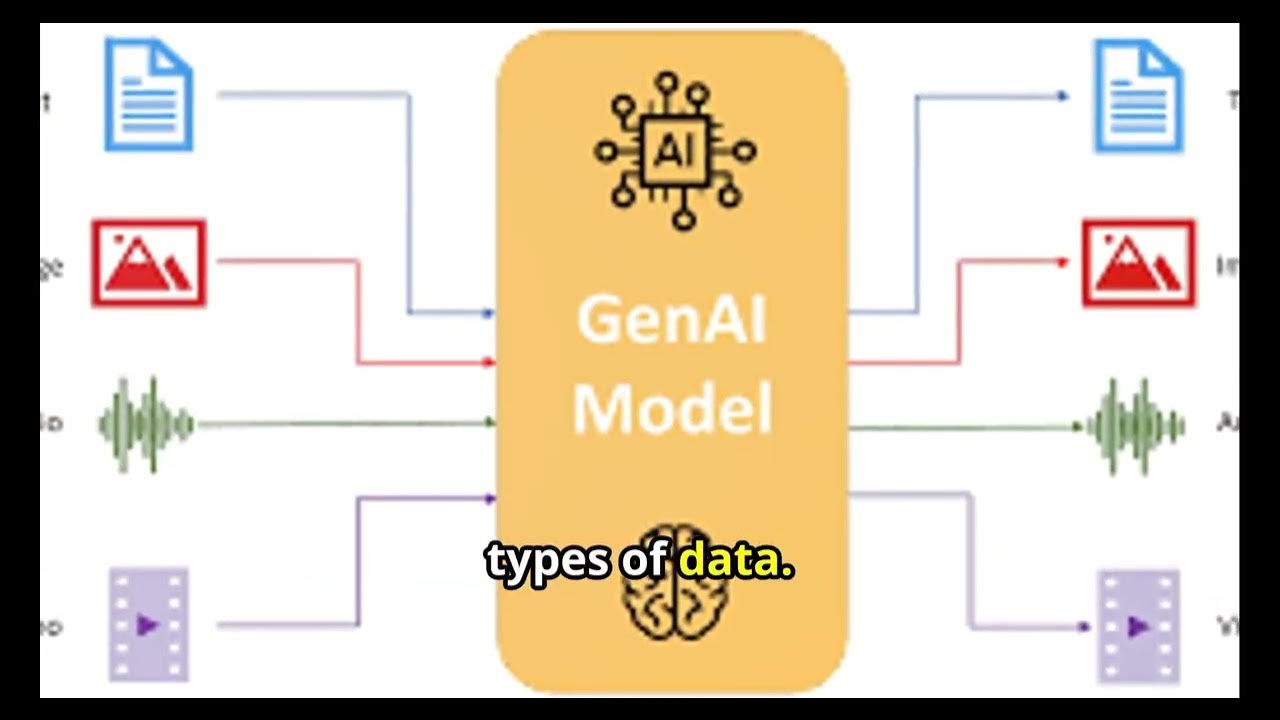Mengungkap Rahasia AI Multimodal Masa Depan Interaksi Manusia Mesin
Summary
TLDRIn this video, we explore the fascinating world of multimodal AI, a technology that allows AI systems to process and understand different types of data like text, images, and sound simultaneously. This ability enhances the AI's understanding of human communication, making interactions with machines more natural and effective. Multimodal AI is revolutionizing industries like healthcare, education, and customer service by improving accuracy and efficiency. Although challenges like data synchronization remain, advancements in this field promise a future where AI interactions are richer, more intuitive, and transformative to our daily lives.
Takeaways
- 😀 Multimodal AI enables artificial intelligence systems to process and understand various data types like text, images, and audio simultaneously.
- 😀 This technology helps AI systems better understand human communication by grasping context and nuance, similar to how humans use multiple senses to interpret the world.
- 😀 Multimodal AI enhances human-machine interaction, making it more natural and efficient across sectors like healthcare, education, and customer service.
- 😀 In healthcare, multimodal AI can help doctors analyze handwritten medical notes and patient images, leading to more accurate and faster diagnoses.
- 😀 In education, multimodal AI can evaluate both verbal and written student responses simultaneously, providing personalized and in-depth feedback.
- 😀 The underlying technology behind multimodal AI includes machine learning, natural language processing, and object recognition models.
- 😀 These AI models are trained to understand and interpret data from multiple sources, ensuring both fast and accurate responses.
- 😀 One challenge faced by multimodal AI is aligning and synchronizing data from various sources to provide coherent and accurate outputs.
- 😀 Researchers are working on improving algorithms to make multimodal AI more intuitive and capable of overcoming current challenges.
- 😀 With ongoing research and technological advancements, the future of multimodal AI promises richer and more natural interactions between humans and technology.
- 😀 Multimodal AI has the potential to transform industries and revolutionize the way we live and work, offering new possibilities for both individuals and organizations.
Q & A
What is multimodal AI?
-Multimodal AI refers to artificial intelligence systems that can process and understand various types of data simultaneously, such as text, images, and sound. This allows AI to better understand context and nuances in human communication.
Why is multimodal AI important?
-Multimodal AI is important because it enables more natural and effective interactions between humans and machines. By processing different forms of data simultaneously, it improves the accuracy and efficiency of responses, which is crucial in sectors like healthcare, education, and customer service.
How does multimodal AI improve human-machine interaction?
-By processing various types of data, such as text, images, and audio at the same time, multimodal AI can respond more accurately and naturally. This makes interactions more intuitive, much like how humans use multiple senses to understand the world.
Can you provide an example of how multimodal AI is used in healthcare?
-In healthcare, a doctor might use multimodal AI to simultaneously analyze handwritten medical records and a patient's X-ray images for a faster and more accurate diagnosis.
How does multimodal AI work behind the scenes?
-Multimodal AI integrates technologies like machine learning, natural language processing, and object recognition to interpret and understand data from various sources. These models are trained to ensure that the responses are not only fast but also precise.
What challenges does multimodal AI face?
-Multimodal AI faces challenges in aligning and synchronizing data from different sources, which can make processing complex. Researchers are working on improving algorithms to address these issues, making AI more intuitive.
How does multimodal AI help in education?
-In education, multimodal AI can help teachers assess both verbal and written student responses simultaneously, offering more personalized and in-depth feedback to students.
What is the future of multimodal AI?
-The future of multimodal AI looks promising, with ongoing research and technological advancements expected to make AI systems more sophisticated. These developments will lead to richer and more natural interactions between humans and technology.
What sectors are significantly impacted by multimodal AI?
-Sectors such as healthcare, education, and customer service are significantly impacted by multimodal AI, where accurate and efficient responses are critical.
How does multimodal AI transform the way we live and work?
-Multimodal AI is transforming our lives by enabling more intuitive and efficient interactions with technology, opening new possibilities in both personal and professional environments. It promises to revolutionize how we communicate and work with machines.
Outlines

This section is available to paid users only. Please upgrade to access this part.
Upgrade NowMindmap

This section is available to paid users only. Please upgrade to access this part.
Upgrade NowKeywords

This section is available to paid users only. Please upgrade to access this part.
Upgrade NowHighlights

This section is available to paid users only. Please upgrade to access this part.
Upgrade NowTranscripts

This section is available to paid users only. Please upgrade to access this part.
Upgrade NowBrowse More Related Video

【ソニー社内講演】拡散モデルと基盤モデル(2023年研究動向)

🚀 Qwen2.5-Omni-7B SHOCKS the AI World! Voice & Video Chat in ONE Model – Open-Source & Powerful!

What is Machine Learning?

Generative AI for Absolute Beginners : Types of Generative AI

How do Multimodal AI models work? Simple explanation

GPT5 Next Gen : 7 Upcoming Abilities To Transform AI + The Future of Tech | OpenAI
5.0 / 5 (0 votes)